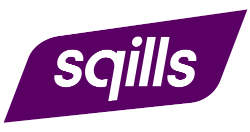
A seat is a seat, but not when it comes to commercial seat selection. Traditionally, most train and bus operators followed a rather rigid and strictly dualistic pattern when it came to distinguishing between various commercial seat classes. For those who wished to travel on a budget, there would be the second or ‘economy’ class or seats. Customers with deeper pockets were offered first-class or ‘business’ seats.
These two types of seats were, and often still are, physically very different. Seats in the latter category almost always come with ancillary benefits such as extensive catering service and meals. The large price gap between the two traditional classes of seats reflects this difference. Depending on route and availability, first-class inventory can sell for up to two or three times as much as second class inventory.
Move to seat differentiation
Most passenger transport brands in the market are now starting to realise that there’s more to seat differentiation than the traditional first vs second class dichotomy though. There are interesting opportunities to diversify the commercial offer within these two traditional classes. One of the ways this can be done is by offering customers the option to pay for the possibility to select a specific or preferred seat on their bus or train trip.
By making this manual seat selection process subject to various price levels, a whole new dimension is added to the commercial offer and for the way revenue can be managed for reserved seating in public transport. Because even within a given inventory class, second class, for example, it now becomes possible to create price differences between individual seats based on very subtle differences in perceived value. Typical examples are seats that are situated in a relatively isolated position, in proximity to a luggage rack or next to a particularly large window on the train that offers a very good view.
Catering to new customer segments
By introducing such categories, operators can cater to completely new customer segments such as the business traveller who was not able to book a first-class seat anymore on a full train, but who is certainly willing to pay an extra €20 for that quiet and isolated seat in second class that is still available.
There is also the budget-conscious tourist couple who do not care for the luxuries of expensive travel but will be tempted to shell out the price of a cup of coffee to obtain those coveted window seats on their bus journey along the coast of southern France. The family of four who need the extra space for their luggage and feels the additional €5 for each passenger is worth avoiding the hassle of those somewhat annoying back-and-forths along the aisle on a long train trip from London to Berlin.
Exceeding customer expectations
Sqills understands the value of such a detailed commercial offer variation for both operators and travellers alike, which is why it introduced a new set of distribution, fare, and inventory management features in S3 Passenger. Those features allow operators to create, maintain and manage a new variety of ‘seat selection products that can be combined with all of the commercial strategies above, and more.
Of course, this new set of features is finely integrated with the existing inventory, sales and distribution management features of S3 Passenger in order to provide dynamic pricing control and even revenue management capabilities that allow operators to maximise the revenue for sales of seat selection products. All this is while resting assured that there is no negative impact on other vital yield influences such as the protection of a particularly high-value inventory and smart seat re-usage.
Commercial strategies in the rail and bus industry are susceptible to trends and changes and it is Sqills’ belief that any piece of software that delivers a solution in such a dynamic market needs to take transformation as a given. It needs to counter this with flexibility, malleability and configurability.
That’s why new seat map product features introduced by Sqills stick to the design pattern the S3 Passenger system has become known for over the years, fully configurable and made to allow operators to respond to such changes in the market in a matter of minutes if needed.

